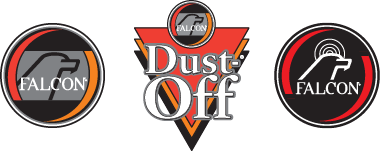The U.S. Aids to Navigation System (ATON)
Buoys and markers are the “traffic signals” that guide vessel operators safely along some waterways. They also identify dangerous or controlled areas and give directions and information. As a recreational boat operator, you will need to know the lateral navigation markers and non-lateral markers of the U.S. Aids to Navigation System (ATON).
Lateral Markers
These navigation aids mark the edges of safe water areas: for example, directing traffic within a channel. The markers use a combination of colors and numbers, which may appear on either buoys or permanently placed markers.

Colors and Numbers
The colors and numbers have the same meaning regardless of the kind of buoy or marker on which they appear.
Red Colors, Red Lights and Even Numbers: These mark the edge of the channel on your starboard (right) side as you enter from open sea or head upstream. Numbers usually increase consecutively as you return from open sea or head upstream.
Green Colors, Green Lights and Odd Numbers: These mark the edge of the channel on your port (left) side as you enter from open sea or head upstream. Numbers usually increase consecutively as you return from open sea or head upstream.
Red and Green Colors and/or Lights: These are placed at the junction of two channels to indicate the preferred (primary) channel when a channel splits. If green is on top, the preferred channel is to the right. If red is on top, the preferred channel is to the left. These can also be referred to as “junction buoys.”

Shapes
Nun Buoy: These cone-shaped buoys are always marked with red markings and even numbers. They mark the edge of the channel on your starboard (right) side when entering from open sea or heading upstream.
Can Buoy: These cylindrical-shaped buoys are always marked with green markings and odd numbers. They mark the edge of the channel on your port (left) side when entering from open sea or heading upstream.

Other Kinds of Buoys and Markers
Lighted Buoys: These buoys use lateral marker shapes, colors and numbers, and have a matching colored light.
Daymarks: These are permanent signs attached to structures, such as posts, in the water. Common daymarks are red triangles (equivalent to nuns) and green squares (equivalent to cans). They also may be lighted.
“Red Right Returning”: In most circumstances, you can use this phrase as a reminder of the correct course when returning from open waters or heading upstream.
Variations on the U.S. Aids to Navigation System

Intercoastal Waterway (ICW)
The ICW is a chain of local channels linked together to provide an inland passage along the Atlantic and Gulf of Mexico coasts.
Channels that are part of the ICW are identified by yellow symbols on channel buoys and markers.
When following the ICW from New Jersey heading toward Brownsville, Texas, these rules apply:
- Any marker displaying a yellow triangle should be passed by keeping it on the starboard (right) side of the vessel.
- Any marker displaying a yellow square should be passed by keeping it on the port (left) side of the vessel.
These rules hold regardless of the shape or color of the channel marker or buoy on which the ICW symbols are displayed. When following the ICW, the yellow markings should be used as guides, rather than the colors and shapes of the lateral navigation markers on which they appear.
Intercoastal Waterway symbols are most commonly found on daymarks.
Western Rivers System
This system of markers is used on the Mississippi River and its tributaries above Baton Rouge, Louisiana, and on some other rivers that flow toward the Gulf of Mexico. Navigation markers on the Western Rivers System are not numbered. Numbers displayed below daymarks along this system are not associated with the right or left side of the channel; these numbers indicate distance from the river’s mouth (except the Ohio River, indicating distance for the headwaters).

Non-Lateral Markers
These give information other than the edges of safe water areas. They are found on lakes and rivers and are used to:
- Give directions and information
- Warn of hazards and obstructions
- Mark controlled areas
- Mark exclusion (closed) areas

Safe Water Markers
These are white with red vertical stripes and indicate unobstructed water on all sides. They mark mid-channels and fairway, and may be passed on either side.

Inland Waters Obstruction Markers
These are white with black vertical stripes and indicate an obstruction to navigation. You should not pass between these buoys and the nearest shore.

Mooring Buoys
These are white with a blue horizontal band, usually placed in marinas and other areas where vessels are allowed to anchor. These are the only buoys you may tie up to legally.


